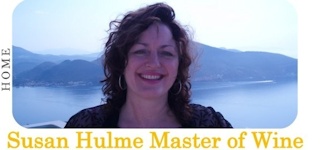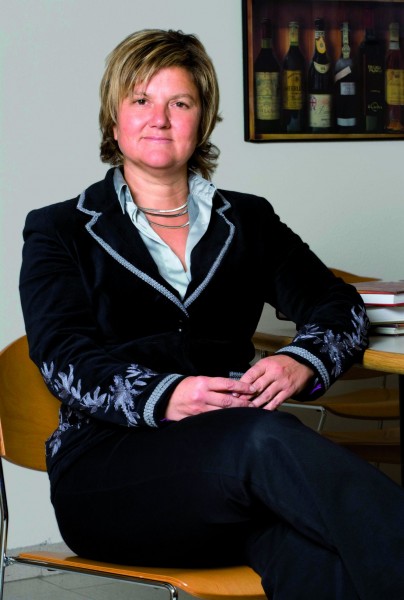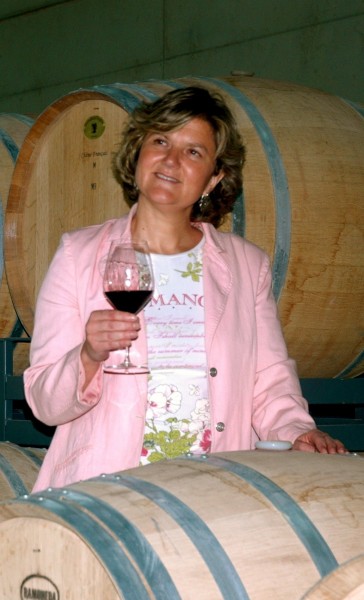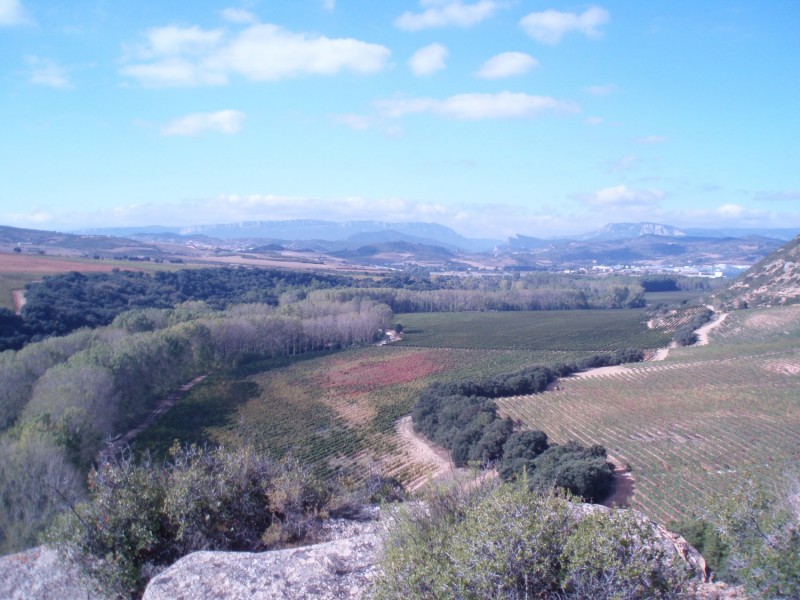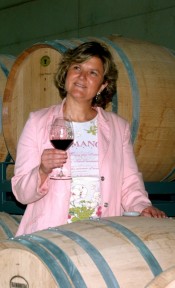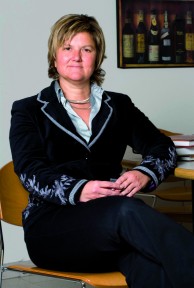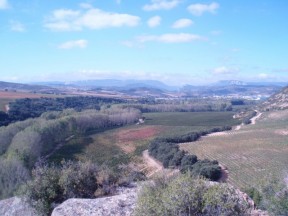On a trip to Navarra last October I reported on the air of excited anticipation and renewed enthusiasm among the wine producers as a new president of the Consejo Regulador, the local wine regulating body, had been elected.
After nine long years of being held back and hampered by outdated restrictions and a lack of communication, at last a breath of fresh air was blowing through the region in the person of new CR President Pilar García-Granero. I had the opportunity to find out more about the changes that are being made by interviewing Pilar at the recent annual wines of Spain tasting in London on March 6h.
Pilar studied in Bordeaux and is a trained oenologist and experienced winemaker herself, and is much respected by her colleagues. She is now doing revolutionary things in Navarra including talking to interested parties and listening to their views. Since she was elected in June 2007, many changes have taken place and more are to follow.
Problems of the past
Her first challenge was to tackle some of the problems inherent in the Navarra wine and grape industry, which, over time, had served to hamper the region’s progress.
“In Navarra,” she explains, “we are producing more than we can sell and the prices paid for grapes are too low. As a result, relations were very strained between the grape growers, the co-ops and the wineries.” Pilar has already greatly improved relations between the different interest groups simply by involving them all in the discussion.
The complicated administration system in the region makes matters more difficult. “We have 17 regional governments and 17 Ministers of Agriculture. Until recent changes in the National Wine Law in 2003 the old wine laws dated from 1970 and many were outdated and restrictive; since 1970 a lot of changes have taken place.”
ICAN
In the past the Consejo Regulador not only made the rules but also enforced them by performing the inspections themselves. This latter role has now been made the responsibility of a new organisation, ICAN (Instituto de Calidad Agrolimentaria de Navarra). The Consejo Regulador sets the rules and makes the judgement about whether they are being kept, but the day-to-day monitoring is done by ICAN.
Inflexible
Some of the old Consejo Regulador rules were very restrictive and old-fashioned; As Pilar explains, “For example you were not allowed to put more than one grape variety on a label, even if the wines were blends; you could not put ‘aged in oak’ or other such terms which help the consumer know what is in the bottle, even when they were accurate. You were only allowed to use the official terms such as Crianza, Reserva and Gran Reserva so there was no room for flexibility.”
Separate Wineries
“Another issue”, she continues, “was that if a winery wanted make both DO wines and Vino de la Tierra or Vino de Mesa wines, they had to have 2 or 3 completely separate wineries and separate bottling lines. They were not allowed to make these different levels of wine in the same winery which made life difficult. This has now changed and different categories of wine can be made in the same winery as long as they are clearly identified and traceable.”
Wine Classification
One of the major changes to be implemented concerns the classification of wines.
There will be two categories of wine:
1. The Navarra DO, with maximum yields of 8000 kg per ha.
2. Vino de la Tierra, which allows higher yields, more experimental grape varieties and a greater range of new techniques. Many of the rules for this, including the maximum yield and which techniques should be allowed are under discussion now, but the VdT category allows the producers the flexibility to respond to consumer trends and the market as well as experiment with new techniques and varieties.
Hopefully this latter category will allow Navarra to compete on a more even footing with New World wines.
 New varieties
New varieties
As far as the Navarra DO is concerned, the new permitted varieties will be Pinot Noir, Syrah and Sauvignon Blanc. In addition to Cabernet Sauvignon, Merlot and Chardonnay have been allowed in the Navarra DO for many years. In spite of this, it is still the case that 70% of the grape varieties grown in Navarra are the traditional ones of Tempranillo and Garnacha.
Quality Controls
While allowing much greater flexibility and freedom in some areas, Pilar is careful to emphasise that quality will be enforced more rigorously than ever before. “There will be stricter controls on yields and vigour, especially in the month of August. Inspectors will inspect vineyards who wish to use the DO to ensure that they do not exceed the maximum yield of 8000 kilos per hectare. If they do, a letter will be sent inviting them to do a green harvest and request a second inspection if they want to retain the DO.”
There will also be stricter tasting criteria. Wines will be tasted by a tasting panel not only when they are made but if they remain unsold they will be re-tasted one year later for rosados or 18 months later for reds. A new tasting panel made up of 40 members has been selected and is currently receiving training so that they are all aware of what they should be looking for.
Promoting the region
As well as structural and administrative changes, Pilar wants to address the lack of marketing and PR for the region, particularly as home sales have been shrinking. “The previous Consejo Regulador did not feel it necessary to spend money on promoting the region of the wines outside Spain. However consumption of wine per capita in Spain is now 23 litres whereas 15-20 years ago, it was 60 litres. People are drinking less but better quality wine.”
While the domestic market wine consumption is decreasing, in other countries it is increasing. The new Consejo Regulador wants to have more active and effective promotional campaigns in three target export markets – the UK, Germany and the USA. They have applied for money from Brussels to do this but failing that they are committed to find money from other sources.
Meetings
The new Presidenta has done the unprecedented thing of calling a series of meetings with producers, winemakers and export managers to discover what they feel is necessary to promote Navarra abroad. They want to also target the HoReCa sector of the market.
As for the immediate future, she outlines her initial goals: “First, to increase prices for grape growers; second, to improve the image and perception of Navarra wines in the eyes of the public; third, to improve distribution in the export market and also in Spain and fourth, to encourage new wineries and new, young winemakers with smaller wineries to the region.”
She also has a plan to develop a new website which perhaps will allow the consumer to buy wines online and direct from the winery.
Co-operation
While pursuing her aims, Pilar is aware that the new Consejo Regulador must be able to maintain this new-found co-operation and good will between the various interest groups in Navarra (grape-growers, co-ops and wineries), but she has a very strong belief in the future of Navarra: “We have some very good companies with very good winemaking technology. We have a lot of young winemakers with lots of ideas, many of whom have studied or travelled abroad and are very open-minded. We have a very special land for growing grapes with some very good growers and grape varieties. Navarra has a great terroir.”
Navarra’s first Pago
As if to underline Pilar’s belief in the region, Bodegas Chivite’s Señorío de Arínzano estate has been awarded the Vino de Pago denomination. It is Spain’s highest wine classification and it becomes one of only five estates in the country to receive the certification.
Photos of Pilar García-Granero and logo courtesy of Consejo Regulador de la Denominación de Origen Navarra.
With grateful thanks to Lindsay May PR and Pilar García-Granero.
© 2008 – 2012, Susan Hulme MW. All rights reserved.
